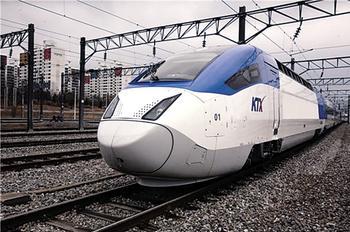 No country in Europe like Spain attaches great importance to the construction of high-speed rail.
No country in Europe like Spain attaches great importance to the construction of high-speed rail. Since the opening of the first route in 1992, Spain has spared no effort in developing high-speed rails. Even today, plagued by the European debt crisis, Spain's high-speed rail construction has not slowed down at all.
Statistics show that by the end of 2010, the Spanish government had invested more than 18.7 billion euros in high-speed railways and it is expected to invest 43 billion euros in the future. On January 8, 2013, Spain opened a high-speed rail link between Barcelona and the western border of France to Figueras. The high-speed rail lines between West and France are officially merged. During the year, a direct high-speed rail link between Madrid and Paris will also be completed.
Spain's high-speed rail has changed the country's traffic pattern. However, like many countries in the world, Spain has encountered new problems: Wealth and employment are too concentrated in one area, and even the completion of a high-speed rail cannot connect the economies of the two places.
What can we discover from the construction of high-speed rail in Spain today when China and the world strongly advocate high-speed rail?
Spanish high-speed rail fever
In 1980, the Spanish government decided to construct the Alta Velocidad Espanola (AVE) high-speed rail project, connecting Madrid to the capital and the southern city of Seville.
The government decided that the purpose of the construction was very clear and promoted the stagnant economy in the south. They hope that economic development will no longer be concentrated in the overheated capital, and that wealth and employment opportunities will gradually spread to the south.
When Seville hosted the World Expo in April 1992, the high-speed rail line was officially opened.
Now, the distance from Madrid, Spain to Seville is 2 hours and 15 minutes. It takes 7 hours to get a train before the high-speed train starts. The car sometimes takes 10 hours.
Another famous high-speed rail line connects two important Spanish cities, Madrid, the capital, and Barcelona, ​​the capital of Catalonia. In the past, the distance between Barcelona and Madrid was 520 kilometers and it took six hours to drive. Since the opening of AVE in 2008, this journey has been shortened to 2 hours and 38 minutes.
The completion of the high-speed rail has changed the way the Spaniards travel. At present, the number of high-speed rail passengers has exceeded the number of passenger cars. This change has brought both political and environmental benefits to Spain. As in other EU countries, Spain plans to cut carbon emissions by 20% in the next 10 years. Analysts said that each high-speed rail passenger's carbon emissions is only equivalent to one-fourth of the aircraft or car passengers.
For passengers, the choice of high-speed rail is more important because of their comfort. Josep Vals, a professor of marketing at Esade School of Business in Barcelona, ​​believes that Spain’s high-speed rail trains are very focused on quality service. There are sun loungers, computer interfaces and headphones in the car, delicious food and movies, and even services. People are wearing white gloves.
"Since the high-speed train started operating, I never took a plane again," said Mr. Martinez. The 31-year-old lawyer travels between Madrid and Barcelona twice a week. "Why do you fly?" It is clear that Spanish high-speed rail operators have begun to overthrow the traditional concept of traveling on trains and planes.
The completion of the high-speed rail is undoubtedly a huge benefit to those who have to go to and from these two places. However, for the residents of Seville, it is not as good as it seems. Economists believe that the AndalucÃa region where Seville is located has not benefited as much as people expect.
The high-tech company Alter Tuv Nord is one of the few examples to benefit. In 1992, the first high-speed rail in Spain was opened, and Alter Tuv Nord moved from the capital Madrid to Seville on the other side of the high-speed rail line.
Alter Tuv Nord executives said that moving from Madrid is not just about high-speed rail, but there are other more important reasons.
Walter Fischer, the company's corporate development manager, said that the main reason for their relocation was the attractive subsidies provided by the Andalusian government and the European Union.
“There are three main reasons for our relocation,†Fisher said. “The locals and the city council provide support for the relocated company; Seville has a very good technical university here, which provides us with excellent talents... Finally, because There is good contact with Madrid."
Alter Tuv Nord first obtained a pavilion at the 1992 Seville Expo as a high-tech laboratory on very favorable terms.
But there are not many successful examples like Alter Tuv Nord. Although people in Seville no longer need to spend more than seven hours driving to the capital Madrid, the high-speed rail line did not help the poor city to change its fate as some people promised.
There are numerous high-speed rail lines in Spain and the Seville-Madrid line was built first. Renfe, the rail operator of the railway operating company, earned money but could never pay for the billions of dollars spent on building the railway.
“It is not enough to rely solely on high-speed rail. The problem in southern Spain is that there are no other conditions there—such as technology, human resources, attitudes, and economic diversification.†Gonzalo Sanz, Professor of Economics, CEU University, Madrid, San Pablo, Madrid - Magellan analysis "To develop a region today, you need innovation, education, and people's support. However, these have not been developed and promoted in Seville and southern Spain."
Does not help eliminate regional inequality
On the other side of Europe, the United Kingdom also encountered similar problems with Spain - the difference is that the problems in the United Kingdom appeared in the north. With the planned high-speed rail network, the British government hopes to establish a high-tech company like the Alter Tuv Nord in northern England.
At present, there are many disputes over the planned HS2 new high-speed rail network from London to Birmingham to Manchester and Leeds. Up to 327 billion pounds of investment is on the one hand, and economic growth and carrying capacity are two of the hot issues.
Like Spain, when questioned, British politicians also unanimously claimed that the project will bring huge economic benefits, especially to the north of England and the Midland region. Deputy Prime Minister Nick Clegg talked about using HS2 to "eliminate the North-South divide." Prime Minister David Cameron said that this will "begin to adjust the economic structure from the southeast."
"You can understand the importance of this policy. At least at first glance, this economic view is logical: If Manchester's journey to the capital abruptly changes from 2.5 hours to 1 hour, it will attract some orders from the capital. Come here, then companies can relocate, use lower costs, and diversify wealth and job opportunities in our northern cities and more in the surrounding areas,†said the BBC. “However, like Spain, the completed high-speed rails are also Unable to determine economic benefits will certainly flow between the two places."
John Tomeney is a professor of urban and regional planning at the University College London (UCL) in the United Kingdom. He is commissioned by the British Public Statistics Commission to write a report on HS2.
“If we take a look at the economic analysis data and experience from other parts of the world,†he said, “it will be hard to prove that there is a connection between building a high-speed railway and eliminating regional inequality.â€
Professor Tomney said that there is no strong evidence that high-speed trains have contributed to Seville or other smaller cities. He said the opposite was true, and there is evidence that the high-speed rail is actually protecting the dominance of already wealthy cities.
“In a city like London, high-yielding companies will be able to serve distant markets in northern cities from their existing bases, which is more effective than providing services from northern bases,†he said. “So if you're in London and the North The time between market arrivals in the cities has been shortened, and the main beneficiaries will be the companies already in London. It seems that the same phenomenon will occur in the introduction of these railway lines around the world."
If the United Kingdom can be inspired by the experience of Seville, it will not only need a new railway line to make it easier for companies to relocate.
Professor John Tomeny believes that if Britain wants the high-speed train to work, it must learn from Spain's two experiences. First, the government should curb domestic air transportation and force people to take the train. Second, long-distance railway transportation will only work if it is connected to a short-distance high-speed commuter network of the same type as Spain's existing high-speed rails.
Of course, there are many differences between Spain and the United Kingdom. A big difference is that after the construction of the high-speed railway, the journey time has been greatly shortened — even more so than in the UK, and the British traffic route has already been doing very well.
The British Ministry of Transport said that this project will reduce the time in Birmingham-London from 1 hour 24 minutes to 49 minutes. After the completion of the second phase, the distance between Manchester and London will be shortened from 2 hours and 08 minutes to 1 hour and 8 minutes, and Birmingham-Leeds will be reduced from 2 hours to 57 minutes.
In 2006, the British Labor Party’s transport review rejected the high-speed rail because the benefits were too low to recover costs.
The London-West Midlands section is expected to begin around 2017. The next sections to Manchester and Leeds may begin construction in the next decade and are expected to be opened by 2032-2033.
Various voices have now appeared, discussing the exact path of the route and its impact on the surrounding residents. Of course, if the government invests 32.7 billion pounds in the HS2 project, it will probably give jobs to thousands of people in northern cities like Manchester and Leeds.
“For the United Kingdom, the question that has not yet been resolved is whether there is a better way of investing if only relying on the mega-project of high-speed rail to readjust the country’s economic distribution or even 'repair the gap between the North and the South'?†The BBC questioned.
8.0 Ton Spider Crane
This company mainly produces and sales overhead working truck series, the series of modern municipal engineering, pavement maintenance work series, the series of RV. The products sell well both at home and abroad, and the market prospect is very broad, at the same time cater to the development trend of special vehicles in our country.
8.0 Ton Spider Crane,17.8M Spider Crane Truck,8.0 T Spider Crane Truck,5Sections Spider Crane Truck
Hubei ruiyate Automobile Co.,Ltd , https://www.ruiyateworkingtruck.com
